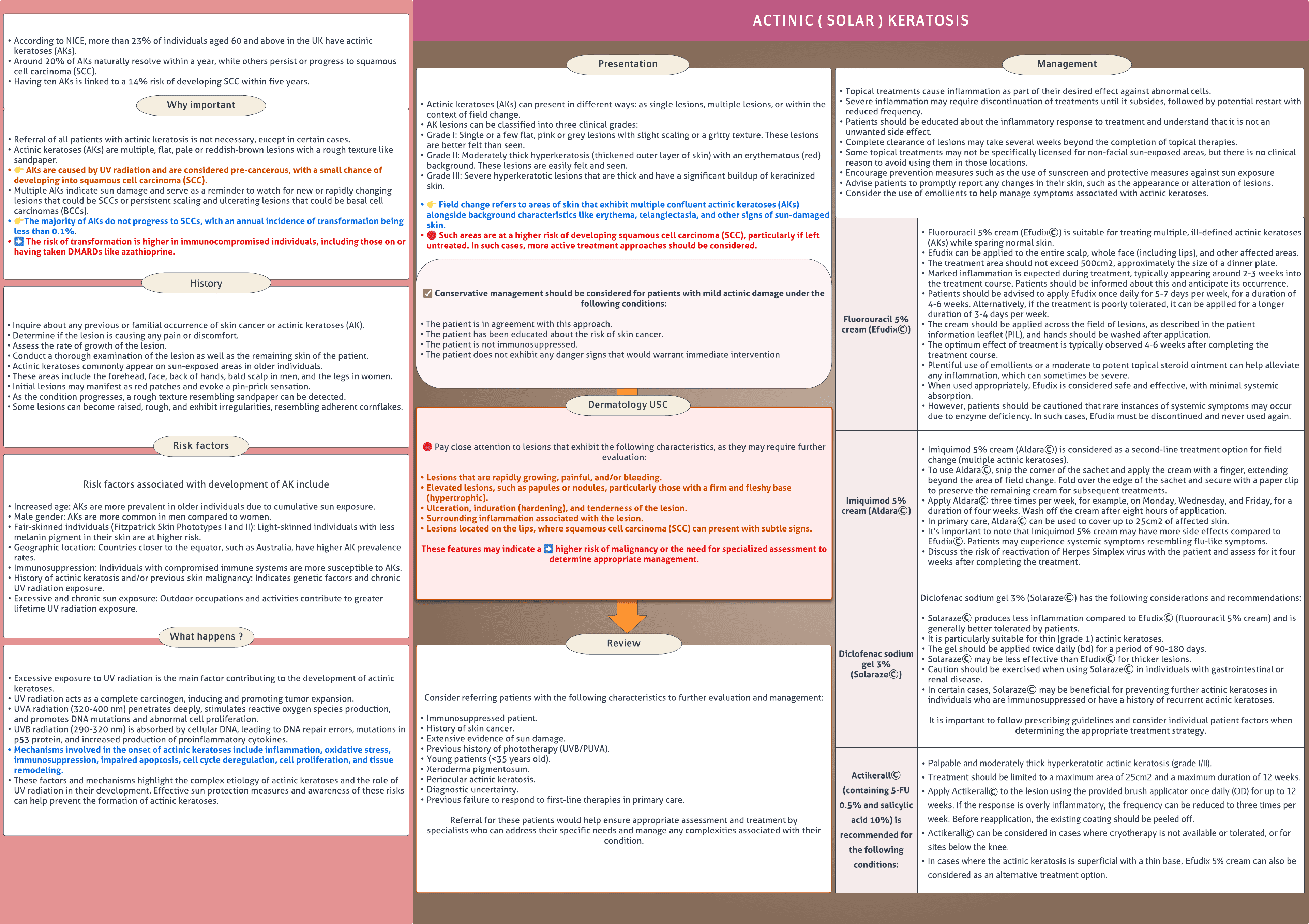Download A4Medicine Mobile App
Empower Your RCGP AKT Journey: Master the MCQs with Us!

According to NICE, more than 23% of individuals aged 60 and above in the UK have actinic keratoses (AKs).
Around 20% of AKs naturally resolve within a year, while others persist or progress to squamous cell carcinoma (SCC).
Having ten AKs is linked to a 14% risk of developing SCC within five years.
Referral of all patients with actinic keratosis is not necessary, except in certain cases.
Actinic keratoses (AKs) are multiple, flat, pale or reddish-brown lesions with a rough texture like sandpaper.
:point_right: AKs are caused by UV radiation and are considered pre-cancerous, with a small chance of developing into squamous cell carcinoma (SCC).
Multiple AKs indicate sun damage and serve as a reminder to watch for new or rapidly changing lesions that could be SCCs or persistent scaling and ulcerating lesions that could be basal cell carcinomas (BCCs).
:point_right:The majority of AKs do not progress to SCCs, with an annual incidence of transformation being less than 0.1%.
:arrow_right: The risk of transformation is higher in immunocompromised individuals, including those on or having taken DMARDs like azathioprine.
Inquire about any previous or familial occurrence of skin cancer or actinic keratoses (AK).
Determine if the lesion is causing any pain...
Try our Free Plan to get the full article.